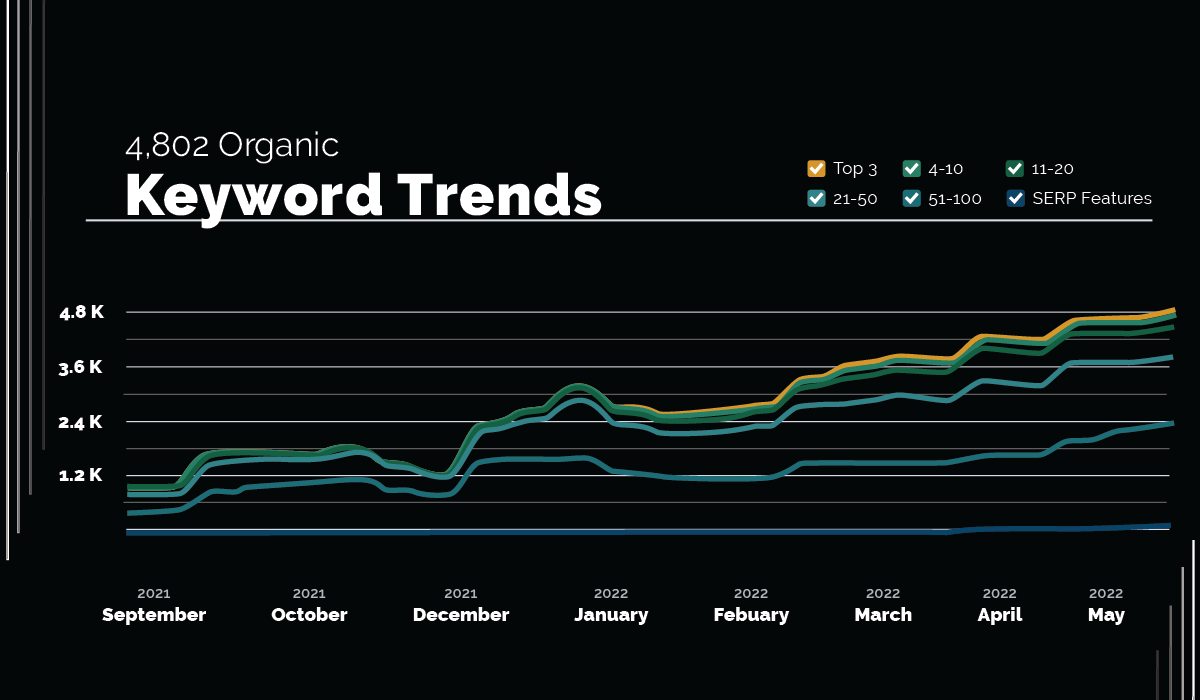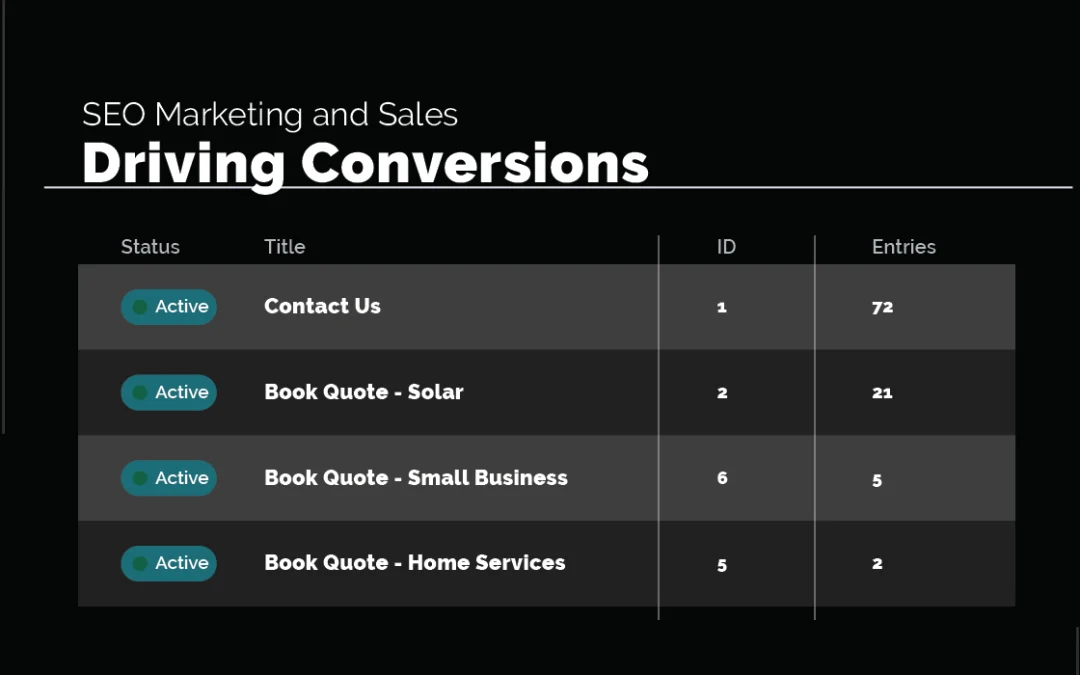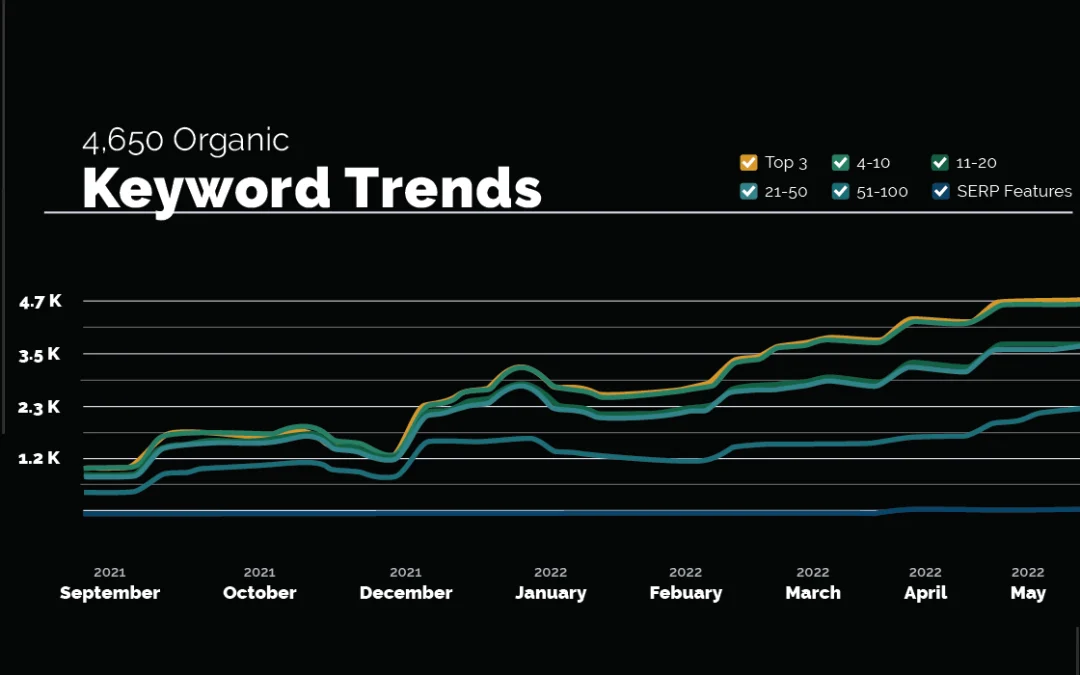Summary
- Tracking the right KPIs is crucial for effective SEO. Important metrics include organic search traffic, keyword rankings, Click-Through Rate (CTR), bounce rate, dwell time, conversion rate, backlink profile, and page load speed.
- SMART goals can guide your SEO strategy and give you a framework for tracking progress. Goals should be Specific, Measurable, Achievable, Relevant, and Time-bound.
- Tools like Google Analytics, Google Search Console, Ahrefs, and SEMrush can offer comprehensive insights into various SEO metrics. Interpreting this data requires consistent monitoring across different time periods and at regular intervals.
- Actionable steps based on your SEO data can range from keyword optimization and fixing technical issues to implementing outreach strategies and improving user experience. Use A/B testing to understand what works and what doesn’t on your webpage so that you can create a high standard for all of your content.
- Regular SEO audits are essential for ongoing improvement and should be conducted at least every six months. For help identifying and meeting your SEO needs, reach out to Monochrome Marketing.
Improving your SEO can sometimes feel like sailing through murky waters, but metrics are your north star. They offer a quantitative measure of your efforts, helping you understand what’s working and what needs improvement.
Below, our SEO team at Monochrome Marketing guides you through several key SEO metrics and offers practical steps you can take to leverage this data for better outcomes. Consider this your SEO cheat sheet.
See Also: What to Expect When Starting an SEO Campaign
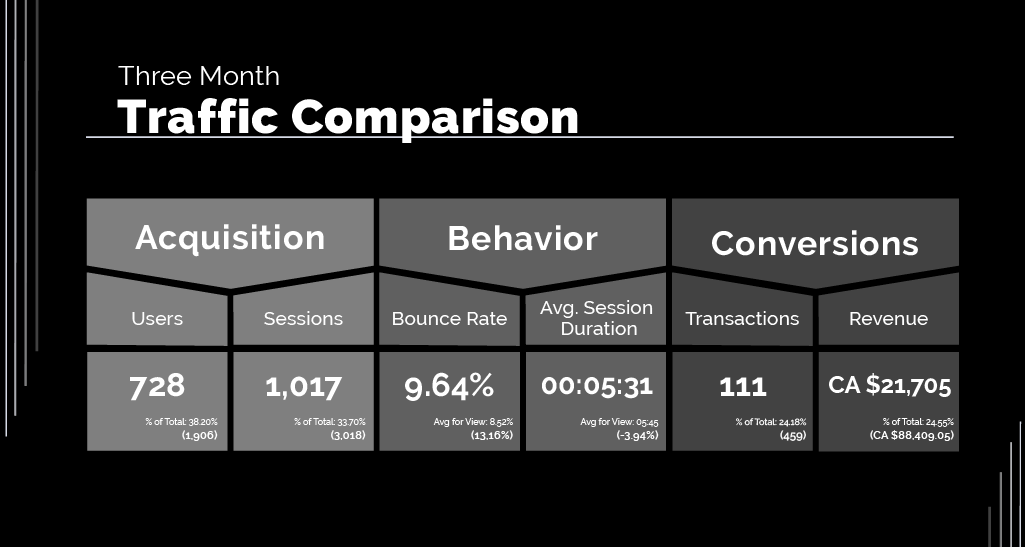
1. Key Performance Indicators (KPIs) for SEO
There’s a ton of data you can collect about any given webpage, but not all of it is useful for refining your SEO strategy. We recommend focusing on the following KPIs for maximum efficiency in your efforts:
- Organic Search Traffic: The number of visitors coming to your website via search engines. A 20% increase in organic traffic month-over-month after launching a new blog series is a good sign; it shows the content is attracting more visitors.
- Keyword Rankings: The position of your targeted keywords in search engine result pages (SERPs). For example, a webpage that moves from position 10 to position 2 for a high-volume keyword indicates that your SEO strategy for that page is on the right track.
- Click-Through Rate (CTR): The percentage of clicks your website receives when it appears in SERPs. A high CTR for a specific keyword suggests that your title and meta description are compelling and relevant to the query.
- Bounce Rate and Dwell Time: Metrics that indicate user engagement. Bounce rate measures how quickly users leave your site, and dwell time measures how long they stay. Shoot for low bounce rates and higher dwell times, which indicate that visitors find your content valuable (and can drive your rankings up as a result).
- Conversion Rate: The percentage of visitors who complete a desired action, such as signing up for a newsletter or making a purchase. If your conversion rate increases after optimizing a landing page, it shows that the changes were effective.
- Backlink Profile: The quantity and quality of links pointing to your website. Gaining high-quality backlinks from authoritative sites boosts your site’s credibility and improves rankings.
- Page Load Speed: How quickly your webpages load. Decreasing your page load times is an easy way to boost user experience, which is a major ranking factor for Google and other search engines.
2. Setting SMART Goals
Now that you know what info to collect, you’ll need to know what you want to achieve with the data. The best way to do this is to set SMART goals, which are:
- Specific: What exactly do you want to achieve with your SEO efforts? The more specific you are, the clearer the path to achieving your goal will be.
- Measurable: How will you track progress and know when you’ve reached your goal?
- Achievable: Is the goal realistic, given your current resources, constraints, and market conditions?
- Relevant: Does this goal fit with your broader business objectives and target audience?
- Time-bound: What is the time frame for achieving this goal?
Making your goals SMART gives them the context, boundaries, and direction they need to be successful. For example:
- A SMART goal might be something like: “Increase organic search traffic by 15% over the next three months by targeting long-tail keywords in the healthcare niche.”
- A non-SMART goal might be something like: “Get more traffic.” This is so open-ended that it’s hard to tell when (or if) you’ve achieved it in a way that means anything for your business.
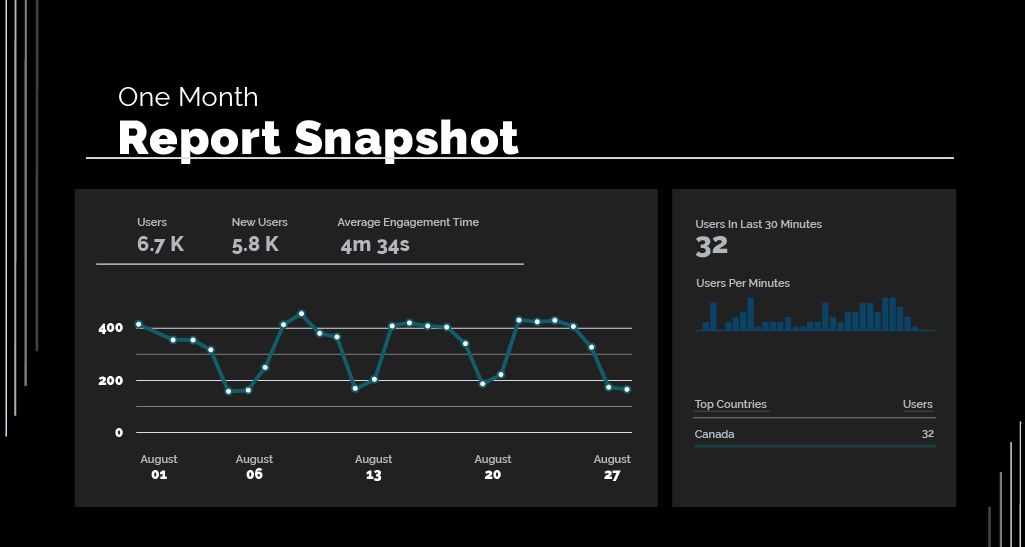
3. Tools for Tracking SEO Metrics
Now it’s time to think about how you’ll gather the data you need. There are lots of tools that can provide insights into different aspects of SEO, but here are a few of the ones we find most valuable in our work:
Google Analytics
This is the go-to platform for monitoring overall website performance—it should be part of every SEO toolkit.
- Pros: Comprehensive data, free to use, integrates with other Google services.
- Cons: Can be overwhelming for beginners.
- Ideal For: Overall website performance, user behavior, and traffic sources.
Google Search Console
This tool from Google shows how your website is viewed by the search engine, and provides useful info on how it’s performing for specific keyword rankings.
- Pros: Free, directly from Google, excellent for keyword performance.
- Cons: Limited historical data.
- Ideal For: Understanding how Google views your site and keyword performance.
Ahrefs
Ahrefs is a powerful tool primarily used for link-building and keyword research.
- Pros: Great for backlink analysis and researching competitor keywords.
- Cons: Pricier than other tools.
- Ideal For: Link building and keyword research.
SEMrush
An all-in-one marketing toolkit, SEMrush excels in providing a range of features including keyword tracking, site audits, and competitive analysis.
- Pros: Powerful, comprehensive, and easy to navigate.
- Cons: Can be expensive for small businesses.
- Ideal For: Keyword tracking, site audits, and competitive analysis.
We use all of these tools when working with our clients at Monochrome, and strongly recommend using them in tandem to track your SEO data effectively. While some of these tools have a learning curve, the insights they offer make mastering them (or working with professionals who are already experienced in their use) well worth it.
4. Interpreting SEO Data
Having data isn’t enough on its own—you also have to interpret it properly if you want insights you can act on. Here are some tips and best practices:
- Regularly Monitor KPIs: Don’t just set it and forget it; regular monitoring helps you catch issues early.
- Compare Time Periods: Assess performance over different time periods to spot trends.
- Analyze Highs and Lows: Look into the specifics when metrics spike or dip to understand what caused the change.
- Segment Data: Break down your data by device, location, or user behavior for more nuanced insights.
- Use Multiple Tools: No single tool can give you a 360-degree view; combine different tools for a complete analysis.
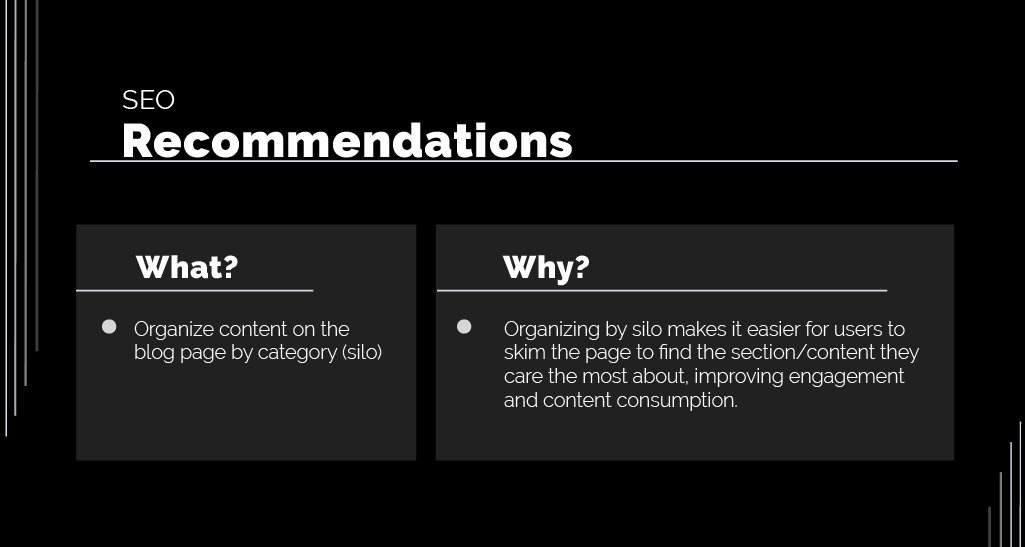
5. Taking Action Based on Your Data
Taking data-driven actions turns your SEO strategy into tangible gains for your business. Here’s how you can apply the insights you’ve acquired:
- Keyword Optimization and Content Updates: Revisit your content periodically and optimize it using high-performing keywords that your data points toward. If you notice certain keywords are bringing in high-quality traffic, consider incorporating them into your key landing pages or blog posts.
- Identifying and Capitalizing on High-Performing Content: Boost the reach of your best-performing pieces through social sharing, paid promotion, or updating them. If a particular blog post has a high dwell time and low bounce rate, it’s likely valuable content that could benefit from additional exposure.
- Resolving Technical Issues Affecting SEO Performance: Use your data to identify and fix issues like slow load times, 404 errors, or unoptimized images. If page speed is an issue according to your metrics, try compressing images and optimizing scripts.
- Implementing Link-Building and Outreach Strategies: Use backlink data to guide your outreach and link-building efforts. For backlink profiles with a lack of authoritative links, try a targeted outreach campaign focused on leaders in your industry.
- Improving Website User Experience: User experience and SEO are increasingly linked in the eyes of search engines, so make this a priority! If your metrics show high bounce rates, consider revisiting your site’s layout, navigation, or content structure to improve user experience.
- Refining Local SEO Efforts: Local SEO can help you compete more effectively in localized searches. High traffic from a particular geographical area is a sign that you might want to optimize the content for local keywords. You should also set up your Google My Business account (if you haven’t already) and update it regularly to stay visible to potential customers in any specific regions you serve.
See Also:
6. A/B Testing & Experimentation
A/B testing is the single best way to understand which of your strategies are effective and which ones need revisiting. Here’s a quick step-by-step checklist for A/B testing a page:
- Identify the Objective: Determine what you’re aiming to improve—CTR, bounce rate, conversions, or something else?
- Select a Variable to Test: Choose one element that you believe will affect the metric you’re targeting—like headlines, images, or CTAs.
- Create a ‘Control’ and a ‘Variant’: The “control” is your current page, and the “variant” is the page with the changed element.
- Split Your Traffic: Use testing software to randomly show 50% of your visitors the control and 50% the variant (you can do this in Google Analytics, but there are lots of other options too).
- Collect Data: Monitor how each version performs in relation to your objective.
- Analyze Results: Consider the difference in performance between the two versions, and note any significant gaps.
- Implement Changes: If the “variant” version is the one that shows significant improvements, make the change permanent. Otherwise, go back to step 2 and choose a new variable to test.

7. Regular SEO Audits & Updates
SEO isn’t a set-it-and-forget-it strategy. It demands regular audits to assess your performance continually. We recommend conducting an SEO audit at least once every six months, or any time you notice significant changes to your conversions, rankings, and traffic. These audits will not only validate your current strategies but can also unearth hidden opportunities or overlooked issues that can be immediately addressed.
See Also:
Remember: there’s a lot of data to consider when setting out on a path to SEO success. Some of it is useful, and some of it isn’t, but you’ll need some tools and strategies to tell the difference and capitalize on the information that’s authentically valuable. Use the steps above to orient yourself, and contact our team to get additional support from professionals who have been doing this successfully for years. We’ll work with you to provide a clearer picture of your SEO needs and create a custom plan to help you achieve your goals.

